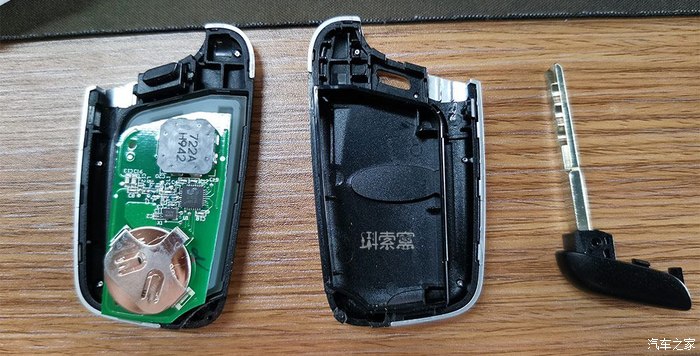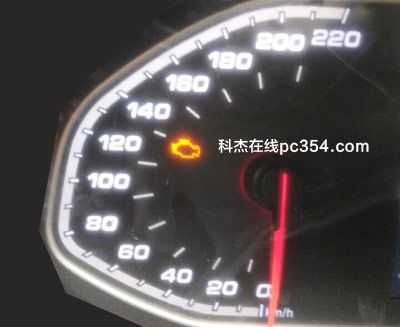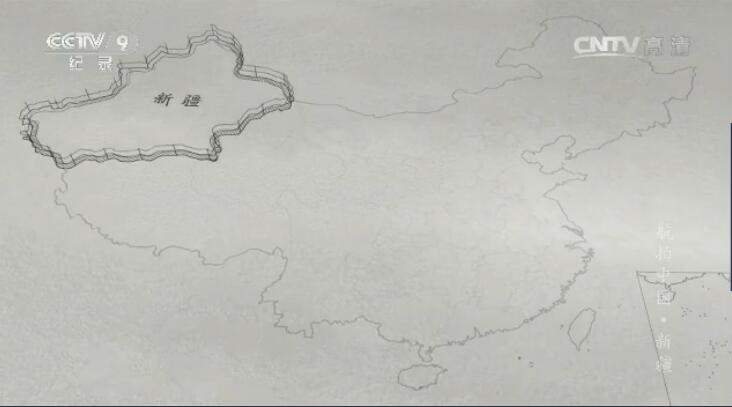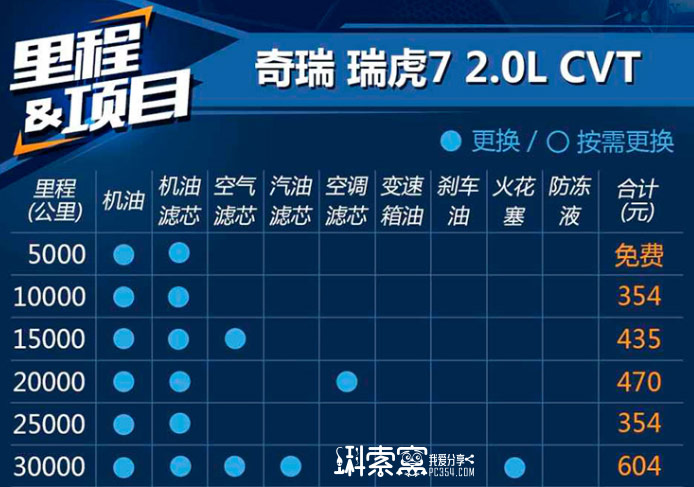vb6(visual basic)常用代码及说明收集 【快速复制本文链接】
vb6根据系统语言,控件显示不同文字的代码
Option Explicit
Private Declare Function GetSystemDefaultLCID Lib "kernel32" () As Long
Private Sub Form_Load()
Dim lcid As Long
lcid = GetSystemDefaultLCID()
Select Case lcid
Case &H804 ' 简体中文
Command1.Caption = "中国"
Case &H404 ' 繁体中文(台湾)
Command1.Caption = "中國"
Case Else ' 其他语言
Command1.Caption = "china"
End Select
End Sub
VB6.0最简单代码实现中文简繁体转换
Private Declare Function LCMapString Lib "kernel32" Alias "LCMapStringA" (ByVal Locale As Long, ByVal dwMapFlags As Long, ByVal lpSrcStr As String, ByVal cchSrc As Long, ByVal lpDestStr As String, ByVal cchDest As Long) As Long
Private Sub Command2_Click() '简体与繁体转换
Text2 = change(Text1, 1)
End Sub
Private Sub Form_Load()
Text1.Text = "科杰在线pc354.com"
'Text1.ForeColor = RGB(100, 0, 211)
End Sub
Public Function change(ByVal cString As String, ByVal nMode As Integer) As String
Dim nLen As Long
nLen = LenB(cString)
change = Space(nLen)
Select Case nMode
Case Is = 0 '繁体转简体
LCMapString &H804, &H2000000, cString, nLen, change, nLen
Case Is = 1 '简体转繁体
LCMapString &H804, &H4000000, cString, nLen, change, nLen
End Select
End Function
替换字符串
Text1.Text = Replace(Trim(Text1.Text), "e", "")
d = Replace(Trim(d), "\\", "\")
d = Replace(Trim(d), "\WeChat Files\WeChat Files\", "\WeChat Files\")
替换字符串中带不带Trim的区别:带Trim表示会自动清除文本开头和结尾的空格后再替换字符
text1.text=" 中华人民共和国 "Text2.Text = Replace(Text1.Text, "中华", "中国")
Text3.Text = Replace(Trim(Text1.Text), "中华", "中国")
VB6鼠标可以随意拖动的窗体
Dim movesScreen As Boolean
Dim mousX As Integer
Dim mousY As Integer
Dim currX As Integer
Dim currY As Integer
Private Sub Form_MouseDown(Button As Integer, Shift As Integer, X As Single, Y As Single)
If Button = 1 Then
movesScreen = True
mousX = X
mousY = Y
End If
End Sub
Private Sub Form_MouseMove(Button As Integer, Shift As Integer, X As Single, Y As Single)
If movesScreen Then
currX = Form1.Left - mousX + X
currY = Form1.Top - mousY + Y
Form1.Move currX, currY
End If
End Sub
Private Sub Form_MouseUp(Button As Integer, Shift As Integer, X As Single, Y As Single)
movesScreen = False
End Sub
VB6最大化、最小化命令
Me.WindowState = 0 '0为普通,1为最小,2为最大
当窗口大小化时发生事件
Private Sub Form_Resize() '
如果父窗体被最小化发生事件
If Form1.WindowState = vbMinimized Then
如何在VB中实现按ctrl+A后,全选文本框中的文字
Private Sub Text1_KeyPress(KeyAscii As Integer)
If KeyAscii = 1 Then
Text1.SelStart = 0
Text1.SelLength = Len(Text1.Text)
End If
End Sub
或者用这个
Private Sub Text1_KeyDown(KeyCode As Integer, Shift As Integer)
If Shift = 2 And (KeyCode = Asc("a") Or KeyCode = Asc("A")) Then
Text1.SelStart = 0
Text1.SelLength = Len(Text1.Text)
End If
End Sub
★文本框自动剔除常用符号及空格,只保留汉字及数字的VB代码
'数字0-9 的Ascii码是 48-57
'字母A-Z 的Ascii码是 65-90 小写字母是 97-122 (下面代码是使用Ucase函数转为大写,所以我97-122从缺)
'汉字 16进制区间 B0A1-F7FE B=66 F=70(下面代码是使用16进制码的第一位,其它英文字,数字与符号的16进制第一码不会在B-F之间)
'添加 Command1
Dim i%, h$, aa$, bb$
Private Sub Command1_Click()
aa = "科!@#杰!@#¥在@!@#@线"
bb = ""
For i = 1 To Len(aa)
h = Hex(Asc(Mid(aa, i, 1)))
If (Asc(Left(h, 1)) >= 66 And Asc(Left(h, 1)) <= 70) Or (Asc(Mid(UCase(aa), i, 1)) >= 65 And Asc(Mid(UCase(aa), i, 1)) <= 90) Or (Asc(Mid(UCase(aa), i, 1)) >= 48 And Asc(Mid(UCase(aa), i, 1)) <= 57) Then
bb = bb & Mid(aa, i, 1)
End If
Next i
MsgBox bb
End Sub
VB6的文本框只能输入数字和VB只能输入一小小数点的方法
Private Sub Text1_KeyPress ( KeyAscii As Integer )
If KeyAscii > = Asc ( "0" ) And KeyAscii < = Asc ( "9" ) Or KeyAscii = 8 Or KeyAscii = Asc ( "." ) Then
If KeyAscii = Asc ( "." ) And InStr ( 1, Text1.Text, ".", vbTextCompare ) > 0 Then
KeyAscii = 0
End If
If Text1.SelStart > = Len ( Text1.Text ) - 2 And _
InStr ( 1, Text1.Text, ".", vbTextCompare ) > 0 And _
Len ( Text1.Text ) - InstrRev ( Text1.Text, ".", Len ( Text1.Text ) , vbTextCompare ) > = 2 And _
KeyAscii <> 8 Then
KeyAscii = 0
End If
Else
KeyAscii = 0
End If
End Sub
更强大更实用的限制文本框只能输入特定字符的方法
调用方法
http://pan.baidu.com/share/link?shareid=214382&uk=1711549925
★VB文本框保留小数点后3位
x = Text2.Text
Text1.Text = Format(x, "0.000")
★vb窗口置顶代码
Private Declare Function SetWindowPos Lib "user32" (ByVal hwnd As Long, ByVal hWndInsertAfter As Long, ByVal x As Long, ByVal y As Long, ByVal cx As Long, ByVal cy As Long, ByVal wFlags As Long) As Long
Const SWP_NOMOVE = &H2 '不更动目前视窗位置
Const SWP_NOSIZE = &H1 '不更动目前视窗大小
Const HWND_TOPMOST = -1 '设定为最上层
Const HWND_NOTOPMOST = -2 '取消最上层设定
Const FLAGS = SWP_NOMOVE Or SWP_NOSIZE
Private Sub Form_Load()
If App.PrevInstance = True Then End '防止程序重复运行
SetWindowPos Me.hwnd, HWND_TOPMOST, 0, 0, 0, 0, FLAGS '窗口置顶
End Sub
★visual Basic 6 如何给窗体窗口加上透明度
'窗口透明度声明开始
Private Declare Function GetWindowLong Lib "user32" Alias "GetWindowLongA" (ByVal hwnd As Long, ByVal nIndex As Long) As Long
Private Declare Function SetWindowLong Lib "user32" Alias "SetWindowLongA" (ByVal hwnd As Long, ByVal nIndex As Long, ByVal dwNewLong As Long) As Long
Private Declare Function SetLayeredWindowAttributes Lib "user32" (ByVal hwnd As Long, ByVal crKey As Long, ByVal bAlpha As Byte, ByVal dwFlags As Long) As Long
Private Const WS_EX_LAYERED = &H80000
Private Const GWL_EXSTYLE = (-20)
Private Const LWA_ALPHA = &H2
'窗口透明度声明结束
'窗体透明度开始
Private Sub Form_Activate()
On Error Resume Next
For i = 0 To 200 Step 5 '0-200是窗体的透明度.从0开始到150.渐渐出现窗体.步长为5
SetLayeredWindowAttributes Me.hwnd, 0, i, LWA_ALPHA
DoEvents
Next i
End Sub '窗体透明度结束
Dim rtn As Long
rtn = GetWindowLong(Me.hwnd, GWL_EXSTYLE)
rtn = rtn Or WS_EX_LAYERED
SetWindowLong Me.hwnd, GWL_EXSTYLE, rtn
SetLayeredWindowAttributes Me.hwnd, 0, 0, LWA_ALPHA
'窗体透明度结束
End Sub
★用vb获取一个文件夹中的文件数量
Private WithEvents s As FileListBox
Private Sub Command1_Click()
Text1.Text = "c:\"
Set s = Controls.Add("VB.FileListBox", "File1")
With s
.Visible = False
.Path = s
.ReadOnly = True
.Hidden = True
.System = True
End With
Text1.Text = s.ListCount
End Sub
★用vb访问网址的方法
Private Declare Function ShellExecute Lib "shell32.dll" Alias "ShellExecuteA" (ByVal hwnd As Long, ByVal lpOperation As String, ByVal lpFile As String, ByVal lpParameters As String, ByVal lpDirectory As String, ByVal nShowCmd As Long) As Long
Public Sub pc354()
webpc354 = Text1.Text
Call ShellExecute(Me.hwnd, "open", webpc354, "", "", SW_SHOW)
End Sub
pc354
End Sub
VB点击文本框自动全选文本
Text1.SelStart = 0
Text1.SelLength = Len(Text1)
怎样计算文件夹下txt文件的个数?
'添加Text1 Command1
'本代码不侦测下一层的文件夹,就只搜你在text1里输入的路径.
Private Sub Form_Load()
Text1.Text = "c:\"
End Sub
On Error Resume Next
Dim sSave As String, Ret As Long, r As Long, rtn As Long, kk As Long
Dim fol, fso, fil, fils, s, f, fldr
Set fso = CreateObject("Scripting.FileSystemObject")
Set fldr = fso.GetFolder(Text1.Text)
Set fils = fldr.Files
kk = 0
Me.Cls
For Each fil In fils
s = s & fil.Name
aa = midstr & "\" & fil.Name
If UCase(Right(aa, 3)) = "TXT" Then
songname = aa
i = InStrRev(songname, "\")
If i > 0 Then
bb = Mid(songname, i + 1) ' 获取文件名
Print bb
kk = kk + 1
End If
End If
Next
MsgBox "共有" & Str(kk) & " 个.txt的文件"
End Sub
批量给控件组定义颜色
Private Sub Form_Load()
For ii = 1 To 88
Text1(ii).BackColor = vbWhite
Next
End Sub
将文本文件加载到文本框控件数组中
'建一个按钮,一个文本框,然后复制这个文本框成数组,文本内容有几行,就要复制几个文本框
Private Sub Command1_Click()
Open "c:\1.txt" For Input As #1
Dim i As Integer, s As String
Line Input #1, s
i = i + 1
Text1(i).Text = s
Wend
Close #1
在窗体任意位置点鼠标左键可以拖动窗体
Private Declare Function ReleaseCapture Lib "user32" () As Long
Private Declare Function SendMessage Lib "user32" Alias "SendMessageA" (ByVal hwnd As Long, ByVal wMsg As Long, ByVal wParam As Long, lParam As Long) As Long
Const WM_NCLBUTTONDOWN = &HA1
Const HTCAPTION = 2
Dim ReturnVal As Long
X = ReleaseCapture()
ReturnVal = SendMessage(Me.hwnd, WM_NCLBUTTONDOWN, HTCAPTION, 0)
End Sub
程序窗体没有标题栏,却能在任务栏显示程序名称的方法
把VB窗体fomr1的boderstyle属性设置为0-none,同时把form1的showintaskbar属性设置为TRUE
让按钮不再显示出难看的虚线
Private Declare Function SendMessage Lib "user32" Alias "SendMessageA" (ByVal hwnd As Long, ByVal wMsg As Long, ByVal wParam As Long, ByVal lParam As Long) As Long
Const WM_KILLFOCUS = &H8 '使按钮失去焦点
Command1_Click
End Sub
MsgBox "科杰在线pc354.com"
SendMessage Command1.hwnd, WM_KILLFOCUS, 0, 0 '使按钮失去焦点
End Sub
VB在退出后可以自动保存窗体大小和位置,下次打开时保持
Private Sub Form_Load()
Me.Width = GetSetting(App.Title, Me.Name, "Width", 7200)
Me.Height = GetSetting(App.Title, Me.Name, "Height", 6300)
Me.Top = GetSetting(App.Title, Me.Name, "Top", 100)
Me.Left = GetSetting(App.Title, Me.Name, "Left", 100)
End Sub
Private Sub Form_Unload(Cancel As Integer)
Call SaveSetting(App.Title, Me.Name, "Width", Me.Width)
Call SaveSetting(App.Title, Me.Name, "Height", Me.Height)
Call SaveSetting(App.Title, Me.Name, "Top", Me.Top)
Call SaveSetting(App.Title, Me.Name, "Left", Me.Left)
End Sub
vb 鼠标进入窗体和离开窗体的事件怎么写?
Private Declare Function SetCapture Lib "user32" (ByVal hwnd As Long) As Long
Private Declare Function ReleaseCapture Lib "user32" () As Long
Private Sub Form_MouseMove(Button As Integer, Shift As Integer, X As Single, Y As Single)
If 0 <= X And X <= Form1.Width And 0 <= Y And Y <= Form1.Height Then
SetCapture Form1.hwnd '已进入
Label1.Caption = "鼠标进入" '这里就是鼠标进入后触发
Else
ReleaseCapture '这里就是离开
Label1.Caption = "鼠标离开"'这里是鼠标离开后触发
End If
End Sub
vb 打开文件(图片、office文档等)
Private Declare Function ShellExecute Lib "shell32.dll" Alias "ShellExecuteA" (ByVal hwnd As Long, ByVal lpOperation As String, ByVal lpFile As String, ByVal lpParameters As String, ByVal lpDirectory As String, ByVal nShowCmd As Long) As Long
Private Sub Command1_Click()
SW_SHOWNORMAL = 1
Call ShellExecute(Me.hwnd, "open", "d:\a.png", vbNullString, vbNullString, SW_SHOWNORMAL)
End Sub
注: Shell "explorer.exe /select, " & “d:\”, vbNormalFocus '只能打开文件夹、bat、exe等文件
vb 判断文件有没有被打开并执行相应动作
Private Sub Command1_Click()
On Error Resume Next
Err.Clear
If Dir("d:\a.xlsx") <> "" Then
Name "d:\a.xlsx" As "d:\a2.xlsx"
End If
If Err.Number <> 0 Then
Text1.Text = "文件a.xlsx已打开"
Else
Text1.Text = "文件a.xlsx已关闭"
Name "d:\a2.xlsx" As "d:\a.xlsx"
End If
End Sub
VB判断鼠标是否在窗体外最简单的代码
Private Declare Function GetActiveWindow Lib "user32" () As Long
Private Sub Form_Load()
Timer1.Interval = 100
End Sub
Private Sub Timer1_Timer()
If GetActiveWindow() = Me.Hwnd Then
Me.Caption = "在"
Else
Me.Caption = "不在"
End If
End Sub
本文为蝌索窝网(科杰在线)pc354.com原创文章,欢迎转载,但请标明出处,谢谢
标题:vb6(visual basic)常用代码及说明收集 链接:http://pc354.com/blog/Article.asp?443.html




![[原创]我的车灯中有水珠,是坏了吗?要不要去换灯? [原创]我的车灯中有水珠,是坏了吗?要不要去换灯?](/xupl0ad/news/201710/2017102317044278376.jpg)
![[原创]新手新车要怎么磨合?要不要“拉高速” [原创]新手新车要怎么磨合?要不要“拉高速”](../blog/upload/Article/201711815215451.jpg)




![[原创]瑞虎7安装踏板的效果如何?要不要装踏板? [原创]瑞虎7安装踏板的效果如何?要不要装踏板?](/xupl0ad/news/201611/2016110814371858979.jpg)



![[原创]简单判断车辆新车漆面新旧的一个小窍门 [原创]简单判断车辆新车漆面新旧的一个小窍门](../blog/upload/Article/201711813366886.jpg)


![[原创]瑞虎7使用教程:空调的使用全攻略 [原创]瑞虎7使用教程:空调的使用全攻略](../blog/upload/Article/201711812930143.jpg)
亲,沙发正空着,还不快来抢?
欢迎在下面留言